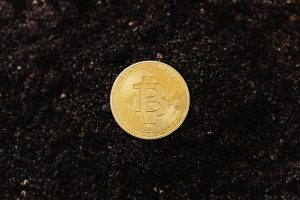Digital Detox Strategies for the Always-Connected Professional
The digital era has brought immense convenience to our lives, allowing us to stay connected at all times, work remotely, and access endless information at the touch of a button. While these advancements have undoubtedly increased productivity and efficiency, they have also brought about a constant need for connectivity and a feeling of being constantly “on.” This has resulted in a growing need for digital detox strategies, particularly for professionals who are always connected. In this article, we will delve into the concept of digital detox and explore effective strategies for those of us living in the fast-paced, always-connected world.
The Importance of Digital Detox for Professionals
In today’s fast-paced world, the line between work and personal life has become increasingly blurred, particularly for professionals who are always connected. With smartphones, laptops, and other devices always within arm’s reach, it’s easy to fall into the trap of being constantly available and responsive. While this may seem like a great way to stay productive, it can actually have detrimental effects on our mental and physical well-being.
Studies have shown that constantly being connected can lead to increased stress, anxiety, and burnout. It also hinders our ability to disconnect and fully relax, leading to a lack of work-life balance. This is where the concept of digital detox comes in – a period of time where we purposely disconnect from digital devices in order to recharge, rejuvenate, and reconnect with the world around us.
Effective Digital Detox Strategies for the Always-Connected Professional
Set Boundaries
The first step to implementing a successful digital detox is to set boundaries. As a professional, it’s important to establish specific times during the day where you can disconnect from work. This could mean turning off your work phone after a certain time in the evening, or making a conscious effort to disconnect during weekends or vacations. Setting these boundaries will help you establish a work-life balance and avoid burnout.
Designate Tech-Free Zones
In today’s digital world, it’s all too easy to take our devices with us everywhere we go. However, this constant accessibility can be overwhelming and hinder our ability to disconnect. Designating certain areas where technology is not allowed can help in creating a physical boundary between work and personal life. This could be as simple as keeping your bedroom a tech-free zone, allowing for a proper restful sleep without being disturbed by notifications and emails.
Unplug on a Regular Basis
In addition to setting boundaries and designating tech-free zones, it’s important to schedule regular digital detox breaks. This could be a complete unplugging for a day, a weekend, or even a week-long vacation. Use this time to indulge in activities that don’t involve technology, such as reading a book, spending time outdoors, or catching up with loved ones. You’ll be surprised at how refreshing and rejuvenating it can be to disconnect.
Practice Mindfulness
One of the main reasons we are constantly connected is because we fear missing out on important notifications or opportunities. However, constantly being distracted and checking our devices can hinder our ability to focus on the present moment. Practicing mindfulness can help break this cycle. Set aside a few minutes each day to disconnect from technology and simply be present – whether it’s through meditation, journaling, or simply unplugging from all devices.
Establish Digital-Free Routines
In the same way that we have morning and evening routines, it’s beneficial to establish digital-free routines. This could include an hour before bed where you disconnect from devices and focus on winding down for a good night’s sleep. Similarly, establish a morning routine that doesn’t involve checking emails or social media immediately after waking up. This will help you start the day with a peaceful and undistracted mindset.
In Conclusion
The digital world we live in can be both a blessing and a curse. While it has undoubtedly brought about immense convenience and opportunities, it’s also important to recognize when we need to disconnect and detox from the constant connectivity. As a professional, it’s essential to establish boundaries, designate tech-free zones, regularly unplug, practice mindfulness, and establish digital-free routines. By implementing these strategies, we can achieve a healthier and more balanced relationship with technology, allowing us to be more present, productive, and fulfilled both personally and professionally.









